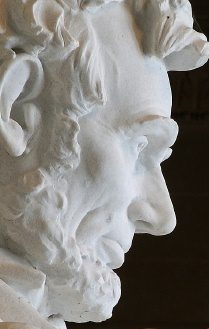In the Afterward of Scott Berg’s excellent book 38 Nooses Abe Lincoln makes an appearance as he did in the book’s introduction. They make a bookend of Lincoln who is mentioned in the book’s subtitle. Lincoln signed off on the hanging. He had no choice as the law handed him the task. Although the book is more about the “Sioux Uprising” it deals intelligently with the question asked repeatedly by people like me who love Lincoln and think of him as a Humanitarian. How could he hand 38 Indians simultaneously?
The Afterword (Epilogue) takes us to the Black Hawk War in which the Sac and Fox tribes were forever chaseded from Illinois and slaughtered. Lincoln was a green soldier in that war who did some marching, saw some bodies but otherwise escaped bloodshed. But blood was spilled at a couple of massacres mostly of the Indians. Author Berg to give some perspective on the hapless Lakota leader in the Sioux Uprising Little Crow tells a story from a quarter century before his warriors made him choose between fighting Minnesota’s settlers or being a coward. He knew what he was getting himself into from his earlier stint helping massacre another group of Indians and in the end he was scalped just as he had scalped to prove his loyalty to the new unstoppable power the United States of America.
Leading 100 Sioux warriors during the Black Hawk War, Little Crow pursued 200 men women and children through Iowa when they thought earlier ordeals were at an end. Little Crow slaughtered them. In the afterword: “The Dakota men, nearly unscathed…presented the….(Indian) agent with 22 prisoners and 68 scalps.”
The point is that Little Crow wasn’t simply a victim.
But what of Davenport?
Thirty years ago Claudia and I made a stop at Davenport, Iowa, to look at its “shot tower.” It was a tall tower that had been used in the Civil War to make lead ammunition for the Civil War. Molten lead is dropped from the top and forms lead pelets on the way down. This was part of the steroid-like development of Northern industry during the war. The Four Cities area of Iowa and Illinois was a hot bed of lead mining. On another trip we stopped at Galena, Illinois, where I had our family visit Ulysses S. Grant’s home. (My son stayed in the car telling us he didn’t “want to see another dead president’s home”). Galena was founded on a lead mine galena being the name of a lead ore.
Last night while reading Unworthy Republic’s chapter about killing ten percent of the first thousand Choctaw Indians to be moved to Indian territory I found out how the lead industry in Iowa got started. (The next chapter will explain how the US let the surviving Choctaw starve the first year of their residence in the Edan we now know as Oklahoma.) Near today’s Davenport their was a thriving and growing Sac Indian community of perhaps 6,000 people which today would be a good sized Iowa town. They were working 1400 year old Lead mines that had been mined for centuries to produce a blue coloration. Now the were mining for lead and much envied by the settlers who started a lead rush to take over their enterprises. Andrew Jackson wanted the Indians moved. He got his way and he is remembered as one of our best presidents as a result.
Claudia who spent her childhood in Iowa and it was her idea to follow the path of destruction from the Sioux uprising a month ago. Before she turned out her lights I peaked in and told her about Davenport and added that she didn’t have to come to Minnesota to feel guilty about what our nation did to Native Americans. She could have felt guilty in Iowa too.
